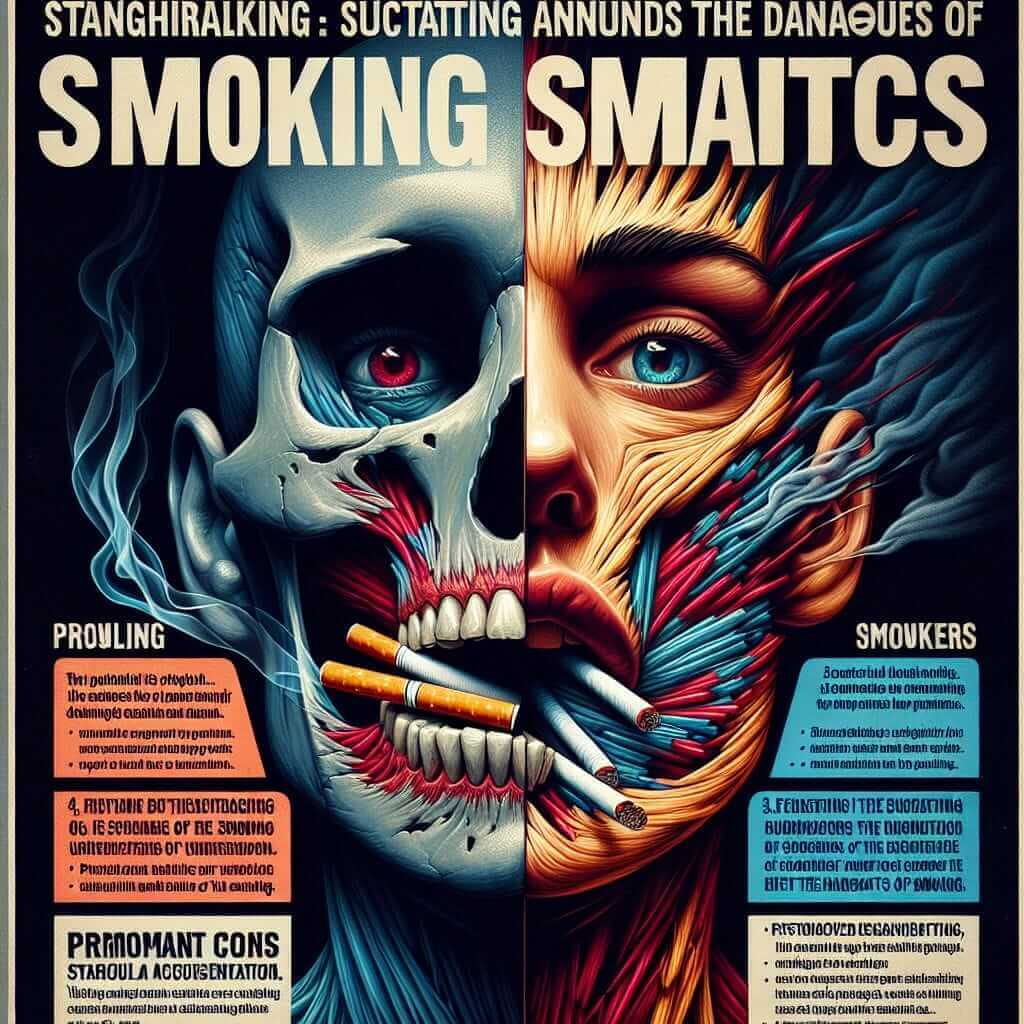The IELTS Reading test requires candidates to read a passage and answer questions that test various reading skills, such as understanding main ideas, identifying details, and interpreting the writer’s opinions. One commonly discussed topic is the impact of public health campaigns on smoking rates. This issue has been prevalent in past IELTS exams due to its societal relevance and the availability of research data. Given its importance, there’s a high chance that such a topic might reappear in future tests.
Reading Passage: How Do Public Health Campaigns Impact Smoking Rates?
Easy Text: Public Health Campaigns and Smoking Rates
Over the past few decades, public health campaigns have decisively shaped smoking rates around the globe. Before these campaigns, smoking was a prevalent activity, greatly increasing health risks such as lung cancer, heart disease, and stroke. Governments and health organizations have utilized various strategies to curb tobacco use, including mass media campaigns, public smoking bans, and educational programs.
Mass media campaigns often employ emotional appeals, factual presentations, and counter-advertising to shift public perception. These campaigns typically focus on the severe health consequences of smoking, the benefits of quitting, and the risks associated with secondhand smoke. Studies have consistently shown that comprehensive media efforts can lower the prevalence of smoking by discouraging initiation among non-smokers and encouraging current smokers to quit.
Public smoking bans, another critical strategy, limit where individuals can smoke, thereby reducing opportunities for smoking and increasing societal pressure to quit. These bans also help to protect non-smokers, including children, from the unwanted effects of secondhand smoke.
Educational programs in schools and communities also play a vital role in reducing smoking rates. By targeting younger populations, these programs aim to prevent the initiation of smoking. Such initiatives often include presentations by health professionals, distribution of anti-smoking literature, and workshops that foster critical thinking about tobacco use.
In conclusion, public health campaigns have proven to be an essential tool in reducing smoking rates through comprehensive media efforts, public smoking bans, and education programs. The multifaceted approach significantly impacts both smoking prevalence and societal attitudes toward smoking.
Shortcode for illustration

Reading Comprehension Questions
Multiple Choice
-
Which of the following is NOT mentioned as a strategy used in public health campaigns against smoking?
a. Mass media campaigns
b. Educational programs
c. Financial incentives for non-smokers
d. Public smoking bans -
According to the passage, what is one effect of public smoking bans?
a. Increased smoking among teenagers
b. Reduced opportunities for smoking
c. Higher rates of lung cancer
d. Decreased societal pressure to quit smoking
True/False/Not Given
- Comprehensive media efforts are shown to lower smoking prevalence. (True/False/Not Given)
Matching Information
Match each campaign strategy with its intended effect:
4. Mass media campaigns
5. Public smoking bans
6. Educational programs
a. Protect non-smokers from secondhand smoke
b. Prevent initiation among non-smokers
c. Discourage initiation and encourage quitting
Answer Key
- c. Financial incentives for non-smokers
- b. Reduced opportunities for smoking
- True
- c. Discourage initiation and encourage quitting
- a. Protect non-smokers from secondhand smoke
- b. Prevent initiation among non-smokers
Common Mistakes
- Misinterpreting the purpose of media campaigns: Some candidates mistakenly believe that these campaigns only serve to inform rather than also aiming to change behavior.
- Confusion between public smoking bans and financial penalties: While both strategies exist, they serve different purposes and impacts.
- Overlooking the role of educational programs: Often, test-takers do not give enough emphasis to educational initiatives and their preventive role.
Vocabulary
- Prevalence (noun): The proportion of a population found to have a condition. [ˈprevələns]
- Comprehensive (adjective): Complete and including everything that is necessary. [ˌkämprəˈhensiv]
- Perception (noun): The way in which something is regarded, understood, or interpreted. [pərˈsepSH(ə)n]
- Initiation (noun): The act of beginning something, particularly a process or action. [iˌniSHēˈāSH(ə)n]
Grammar Focus
- Relative Clauses: “Public smoking bans, which limit where individuals can smoke, provide societal pressure to quit.”
- Use of Passive Voice: “Smoking rates have been shaped by these campaigns.”
- Structure: [Subject] + [Auxiliary Verb] + [Past Participle]
- Example: “Educational programs are implemented in schools to prevent smoking initiation.”
Tips for Scoring High on IELTS Reading
- Skim and Scan: Quickly read the passage to get a general idea, then read the questions and scan the text for relevant information.
- Practice Various Question Types: Familiarize yourself with all question formats such as multiple choice, matching information, and True/False/Not Given.
- Manage Your Time: Allocate time to each section and don’t spend too long on any one question.
- Expand Your Vocabulary: Regularly learn new words and phrases to improve comprehension and speed.
- Understand Argument and Opinion: Recognizing the writer’s views and distinguishing them from facts can help in answering “Yes/No/Not Given” questions effectively.
By incorporating these strategies and practicing thoroughly, candidates can significantly enhance their performance in the IELTS Reading test. Good luck!